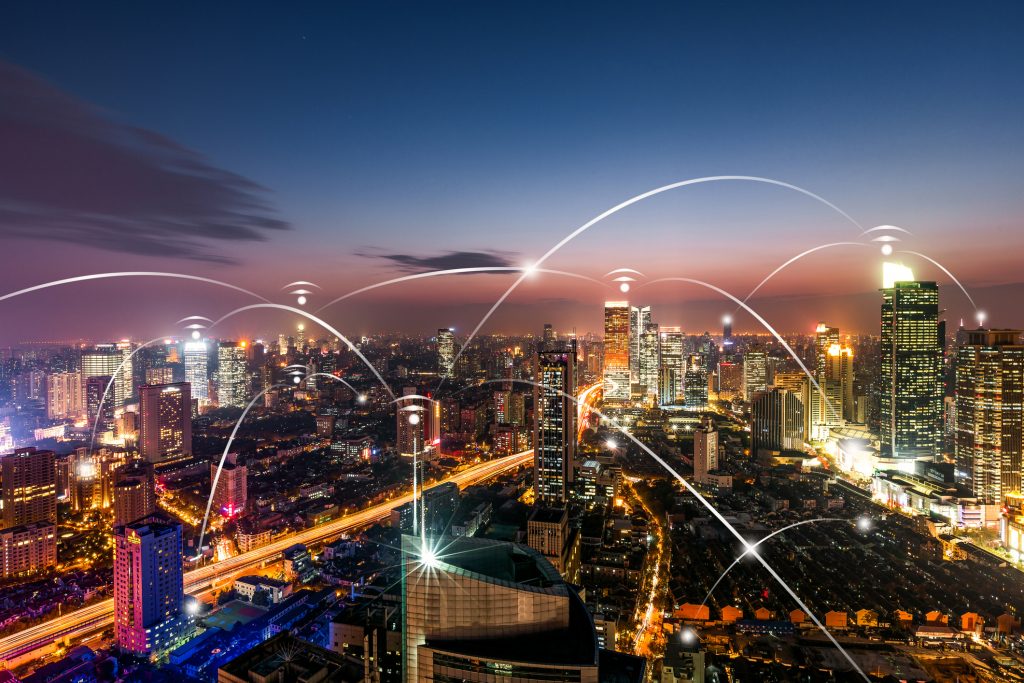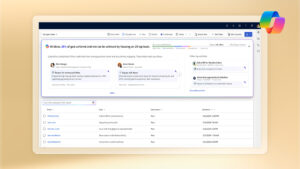
Building smart cities of the future with Microsoft
The term smart city usually focuses on infrastructure and how big data and information technology can be used to better manage urban assets such as waterworks, roads, and public transit. Smart denotes physical assets connected to the Internet of Things (IoT) via sensor technology streaming data such as smart parking meters or smart streetlights. Smart cities use data captured by IoT devices to monitor and perform preemptive maintenance to ensure city services are always at optimal levels. But that’s just part of it. Smart cities can focus on internal local government processes such as digitizing records or an online process for permit applications or licenses. Citizens may describe a smart city by the ease of getting around or the reduction in crime. The bottom line: every descriptor is right. Built properly, a smart city will provide different value to different stakeholders.
The smart foundation
Technology is at the foundation of a smart city, but it’s one of many layers. If technology is the engine, then the fuel drives the outcome. A smart city leverages technology to achieve key outcomes for its stakeholders that include citizens, businesses, government, and visitors. Outcomes can be as broad as making government easier and more effective to do business with to optimizing transportation, transit, and traffic management systems. These results must matter to the stakeholders and should align around the needs of the city such as efficiency, sustainability, mobility, economic development, health, public safety, and quality of life.
A smart city is a vibrant and sustainable ecosystem comprised of people, businesses, policies, and laws tightly woven together to create the desired outcomes. Smart cities are adaptive, responsive, and always relevant to those that live, work, and visit the municipality. A smart city integrates technology to continually accelerate, facilitate, and transform itself.
Smart city v.2.0
Many cities have upgraded their infrastructure using sensing technologies and data analytics to better manage municipal assets such as public transportation, utilities, and roads. This connected infrastructure is comprised of physical assets networked via sensor technology that streams valuable data from smart assets. Connected sensors transmit operational data that helps cities optimize performance and maintain their physical infrastructure. Sensors send diagnostic notifications of anomalies in asset performance to field service personnel, who then diagnose and schedule preemptive maintenance. These systems are so intuitive that field service personnel can identify which part is failing and can bring a replacement rather than diagnosing onsite and scheduling another service call. This workflow eliminates system failures and reduces costs, and most of all ensures that those who live, work, and visit the city are rarely inconvenienced. Smart, isn’t it?
Initially, a smart city consisted of leveraging technology to connect public assets. But now there is a growing shift to better engaging governments, citizens, and business with the goal of improving services and the quality of life. Cities can generate a wealth of data to improve the quality of life of their citizens while spending tax money more wisely. The following examples are all enabled by insight that’s gleaned from connecting devices and sensors that communicate data about their ecosystem and their status within it:
- Optimizing public transit. Collecting ticket sales data on mass transit to determine the level of service required during peak and low volume times. Understanding volume times helps manage overcrowding popular routes and improve citizen satisfaction. These insights can save tax dollars by eliminating or rerouting underutilized routes, creating express routes or adjusting the frequency during low volume times to reduce emissions.
- Peak times, peak pricing. Cities can increase fares and tolls during peak times to generate additional revenue for new transit or public works projects. Tolls or fares can be charged with a swipe of a card or a scan of a bar code, and road tolls can even be automated using license plate scanning.
- Enhancing communication. Not only do buses, trains, and other mass transit communicate with each other, public transit can notify commuters if it’s not on schedule to improve customer satisfaction. Alerting commuters of traffic congestion with real-time traffic monitoring through closed-circuit television cameras (CCTV) and AI-enabled apps can reduce commuter frustrations. Commuters can adjust schedules and take alternate routes or avoid driving by taking public transit.
- Increasing flow. Traffic signal timing can be adjusted for smoother traffic flow by analyzing traffic patterns by signal location, time of day, proximity to busy parking garages, or even providing citizens with a view of parking availability. Cities can also better manage factors such as the logistics of inbound freight and regulate things like double parking of delivery trucks during congested timeframes.
- Staying cleaner. Cities can stay cleaner when trash bins signal that they’re full. Sensors automatically send alerts when a specific weight of the bin is met. Sanitation can then respond when notified rather than creating roadblocks by picking up half-empty rubbish bins.
- Ensuring safety. Cities are safer when law enforcement can identify crime hot spots and respond more quickly to incidents. Streetlights with cameras can be activated by motion detectors rather than running continuously through the night.
The focus of the next-generation smart city is enhancing the citizen experience. Citizens want to connect with their community, share ideas and concerns, learn what’s going on, understand changes in services, and make requests in a frictionless and intuitive manner. They want to interact with the environment and city services as part of a well-planned, efficient, and livable eco-system. And finally, they want to connect with fellow citizens to advance common interests, enjoy public spaces, and be a part of the community.
This enhanced experience focuses on giving citizens a secure way to connect and build trust through exceptional customer service. Municipal employees are empowered to do more with fewer resources and are able to make informed decisions with a deeper understanding of the citizens they serve.
Better together
How do you get started creating your own smart city? First you need a flexible, yet strong foundation. Microsoft Dynamics 365 provides a strong, agile backbone to build a smart city. Dynamics 365 for Field Service connects sensors and other IoT devices to create that solid foundation. Data generated from IoT devices is digested by Dynamics 365 for Field Service and automatically notifies technicians of irregularities. By design, the technology can isolate the issue and help technicians dispatch the right service personnel to resolve the issue before citizens are even aware there was a problem. Preemptive and predictive maintenance of city assets can save taxpayer dollars significantly by committing repairs before there are costly breakdowns. And knowing what the issue is and what parts are required for the fix the first time eliminates costly return visits.
Dynamics 365 for Field Service provides a solid foundation that can be layered with Dynamics 365 for Customer Service, a comprehensive customer service application that helps civic employees personalize every interaction by viewing the entire citizen journey over time. Cities can enhance the experience with 24-hour support with live chat and/or a virtual agent or bot. Dynamics 365 Virtual Agent for Customer Service was specifically designed to let those closest to the citizen create, launch, and maintain bots, eliminating the need for developers or data scientists. Bots can answer routine inquiries any time 24/7 and if the issue is more complex, deliver a warm hand-off to a city employee to handle.
To gain greater insight into the citizens of the community, Dynamics 365 Customer Service Insights can provide city managers interfacing with constituents greater insights into opportunities to improve the experience. Customer Service Insights leverages artificial intelligence to help municipal managers glean rich insights into gaps in service. By identifying these gaps, managers can prioritize what will have the greatest positive impact on the community.
Get smarter, get started
Let us help you enhance citizen experiences, increase sustainability and resilience, and promote innovation for your city services. Learn how Dynamics 365 for Field Service can be the foundation for your smart city.




